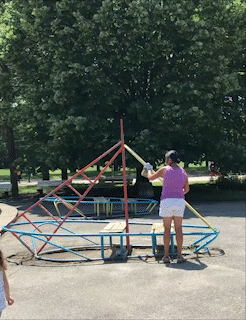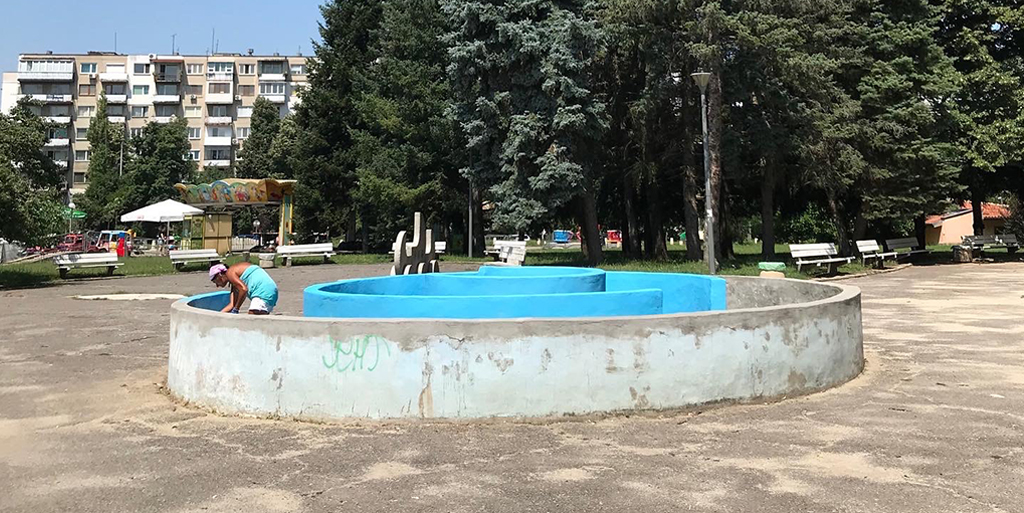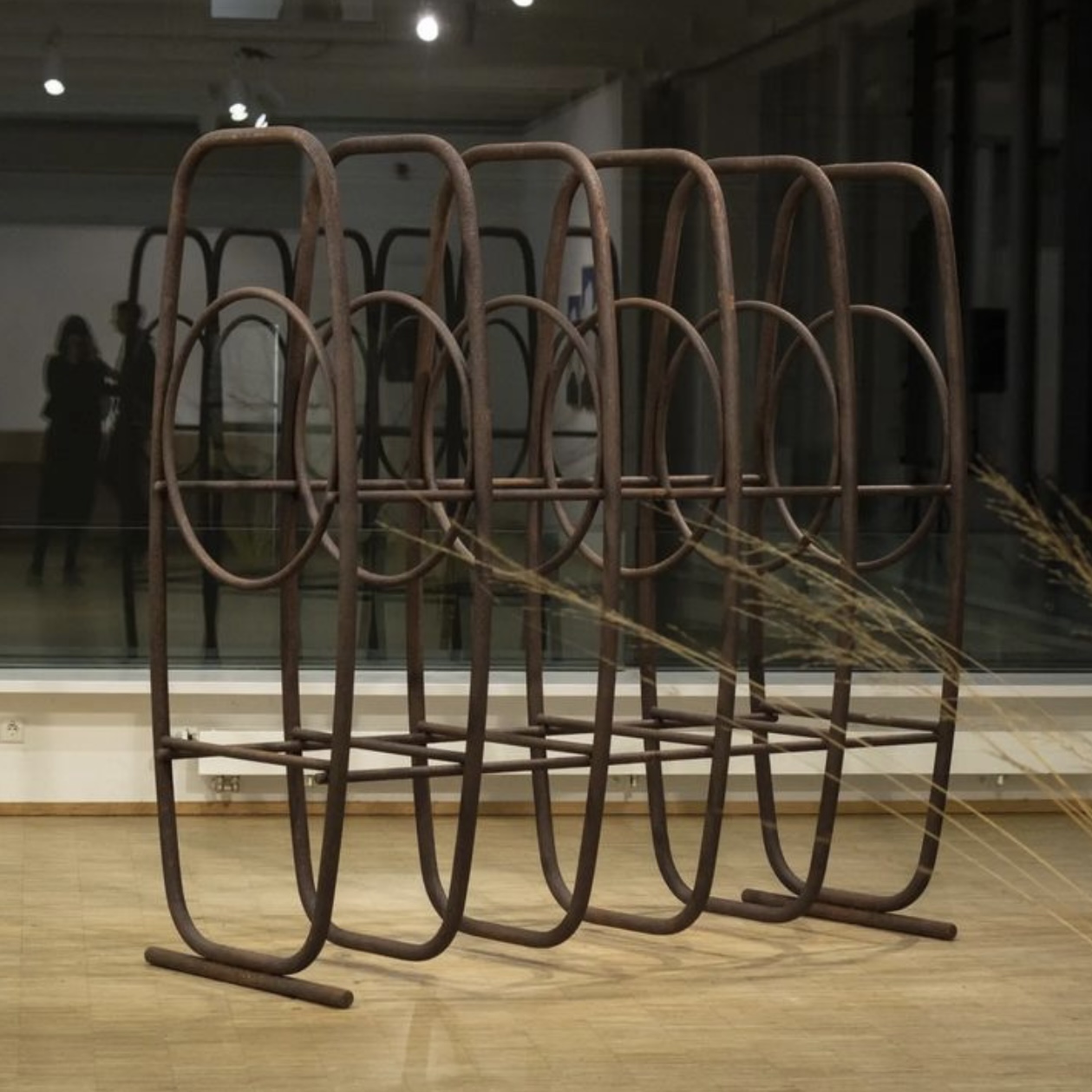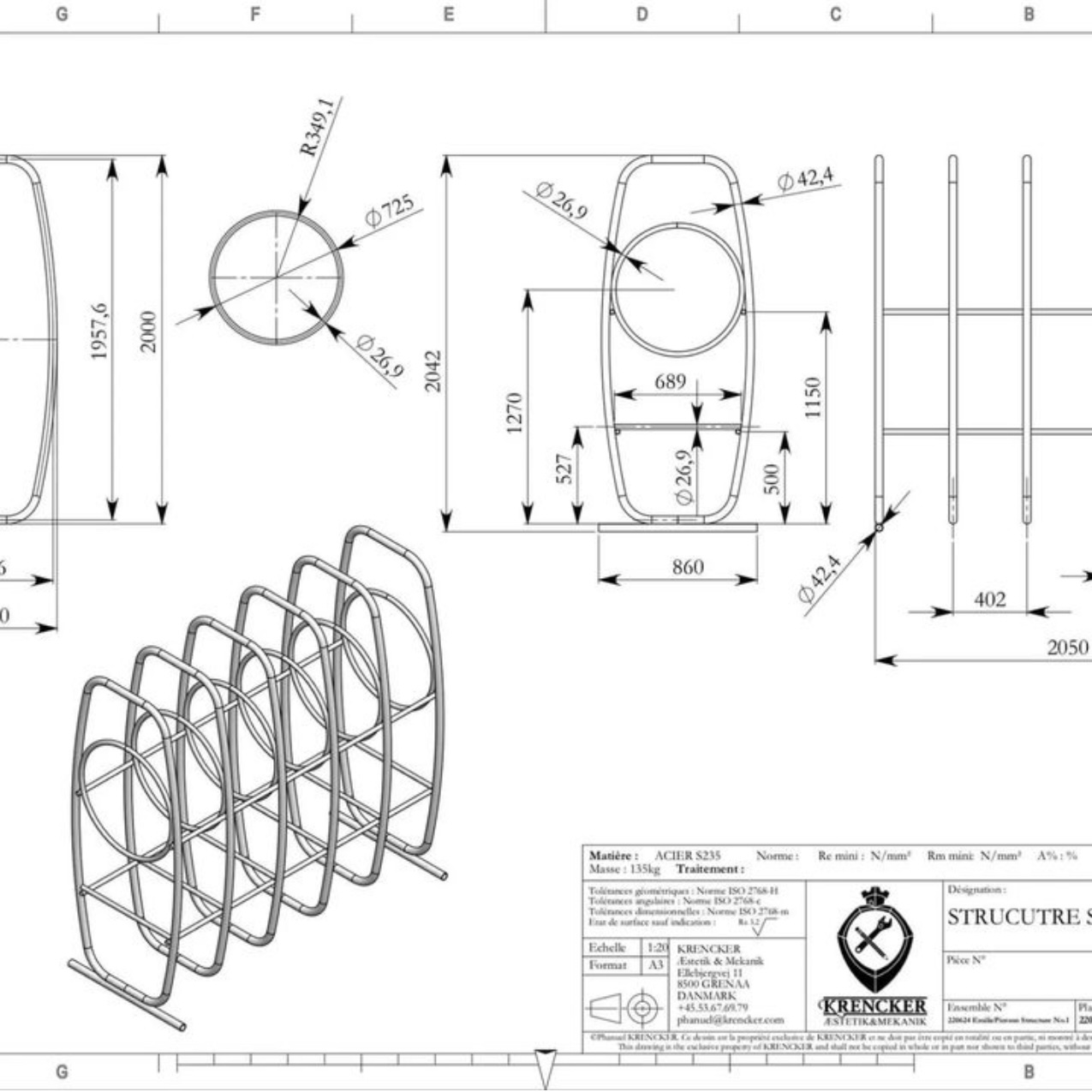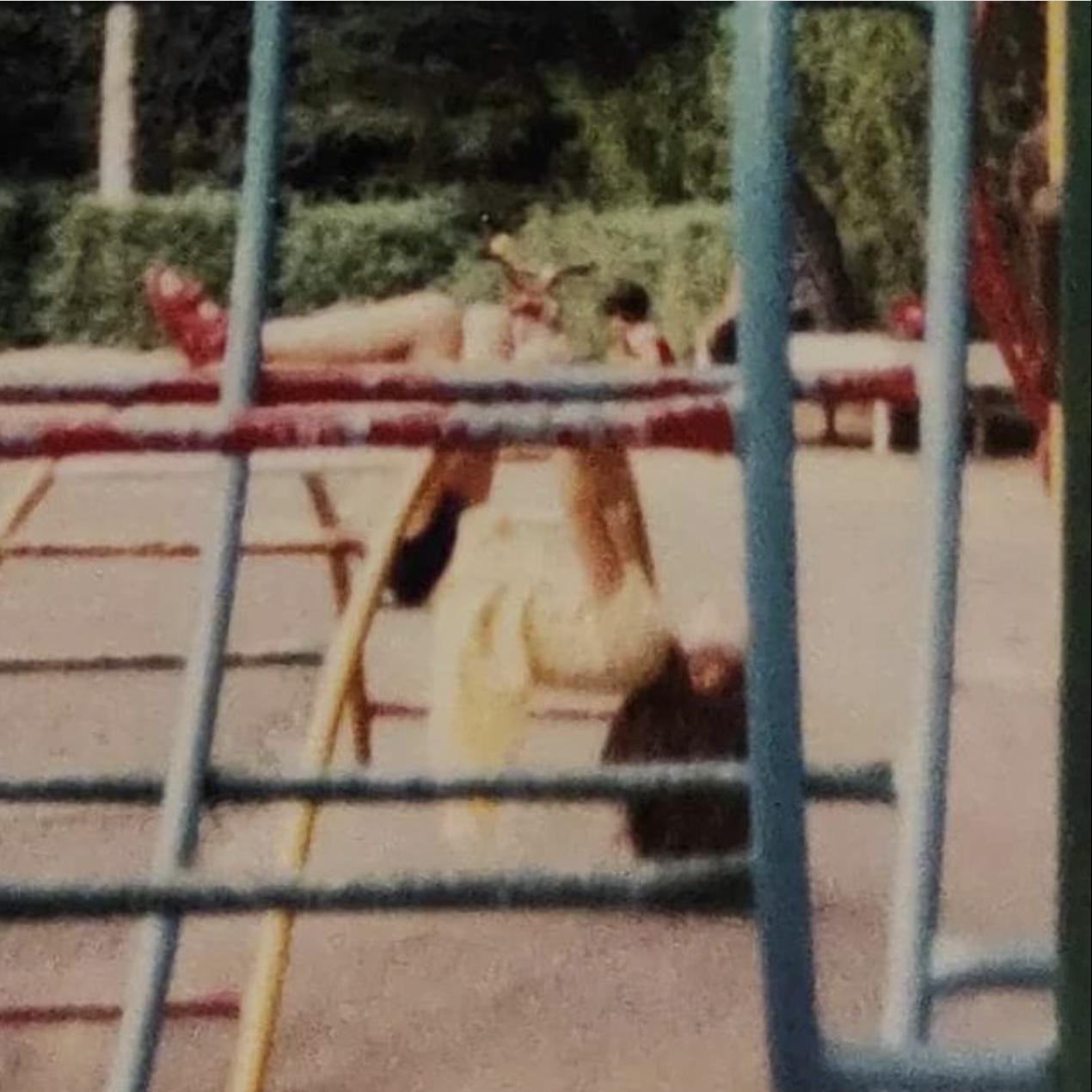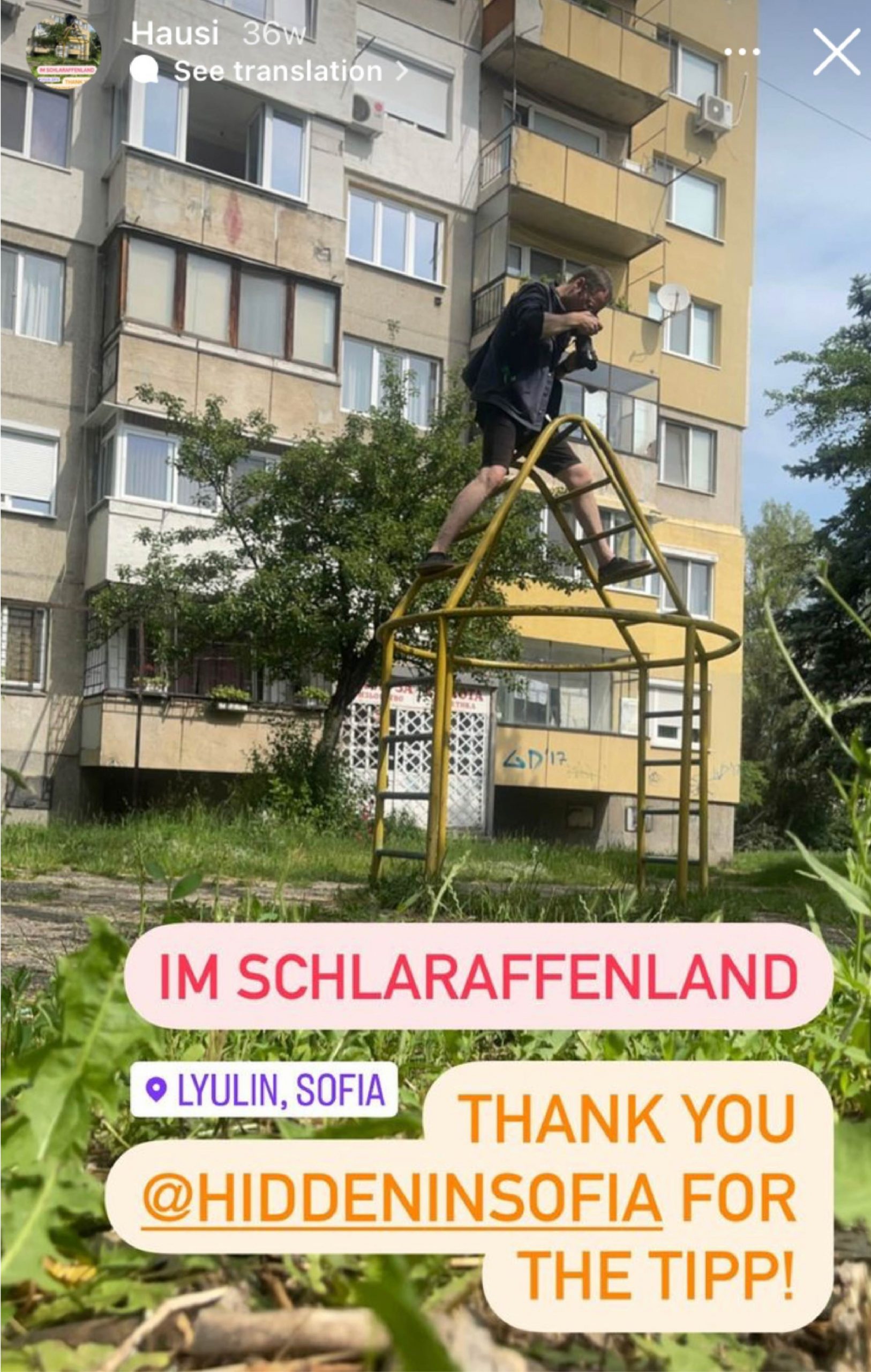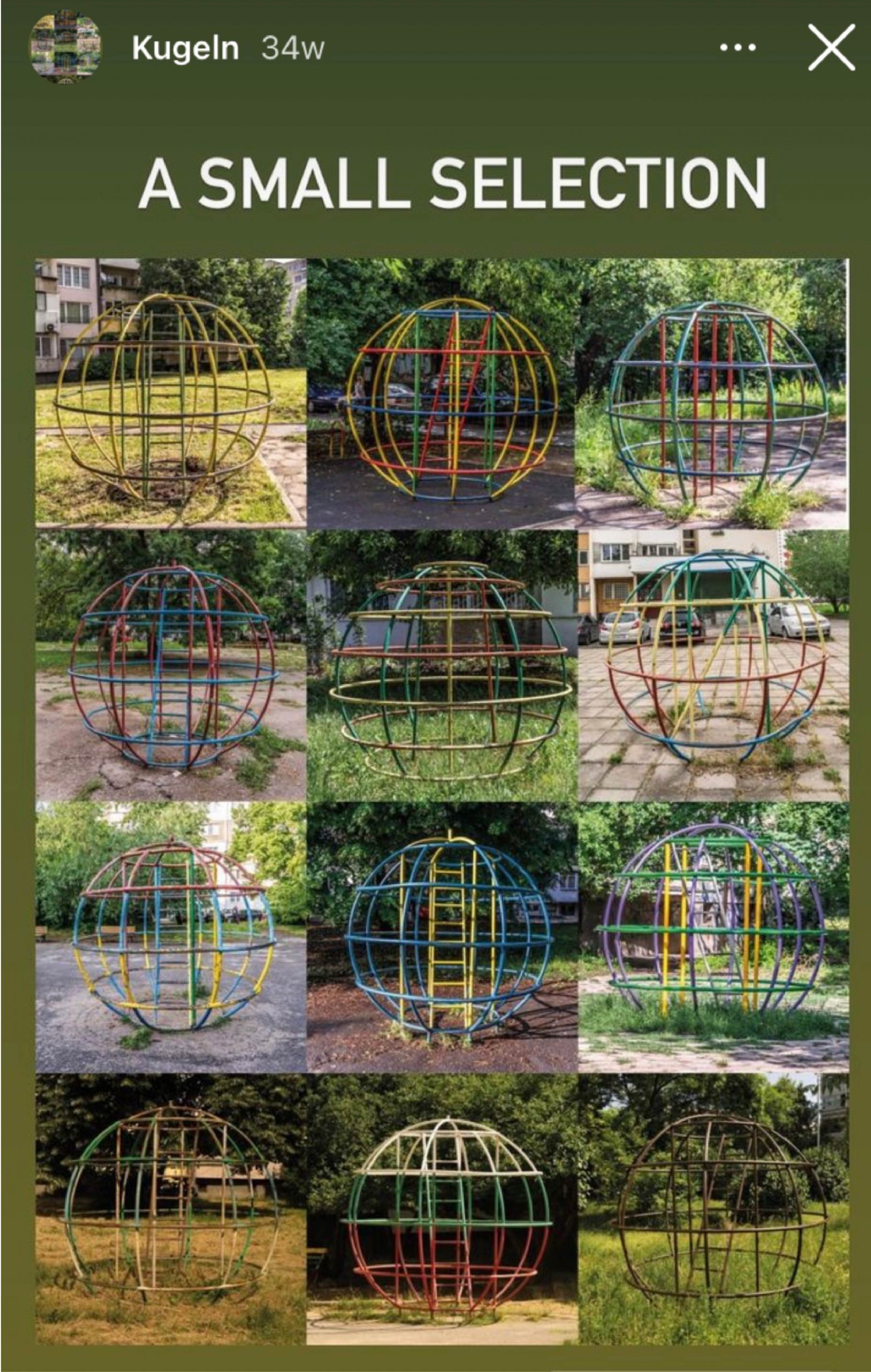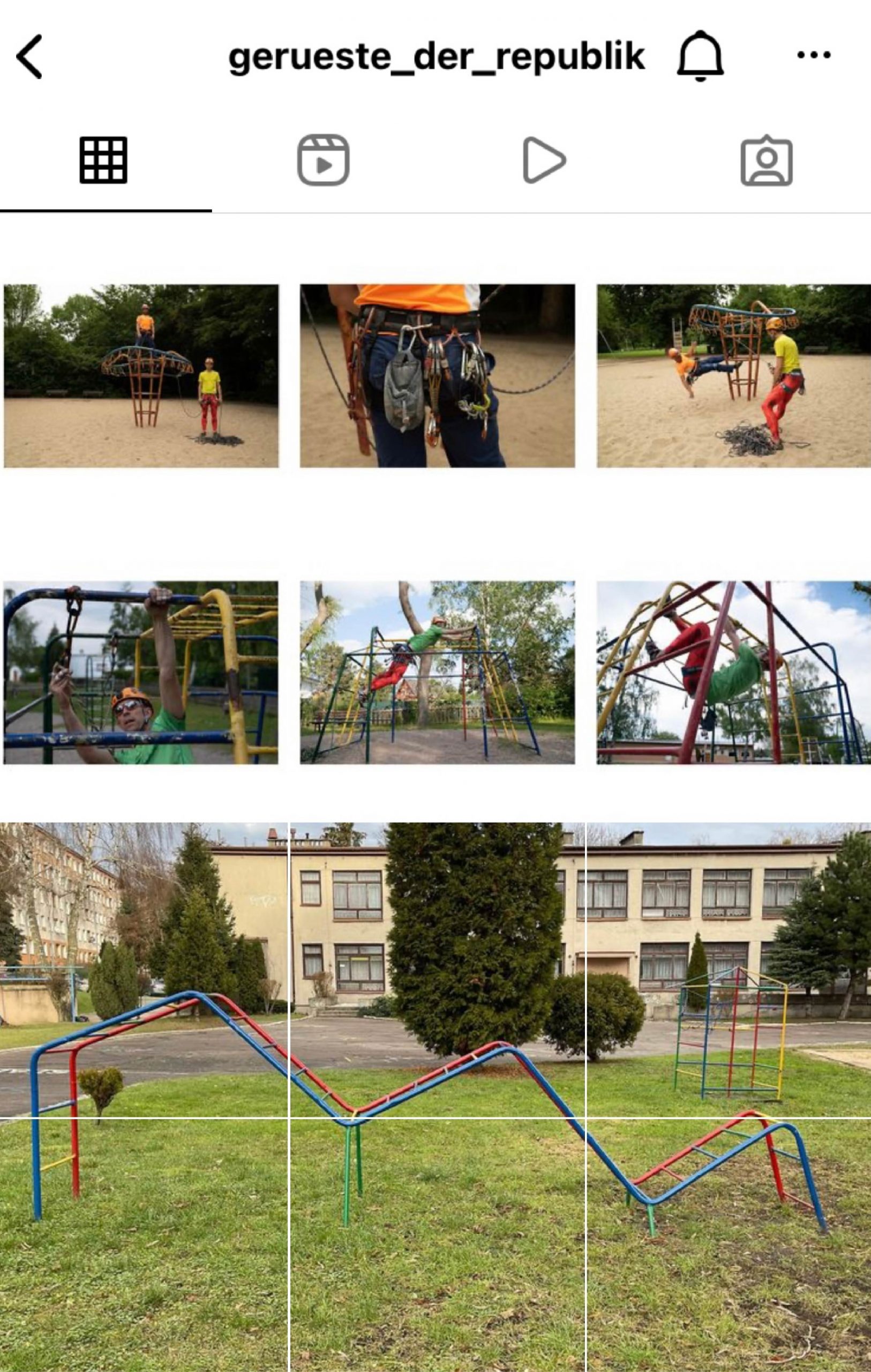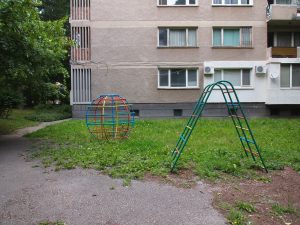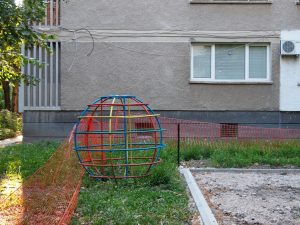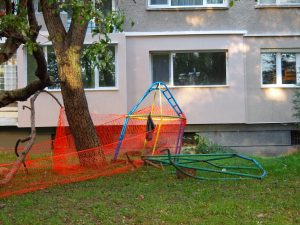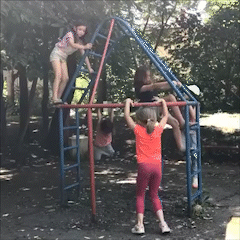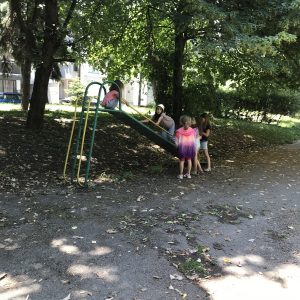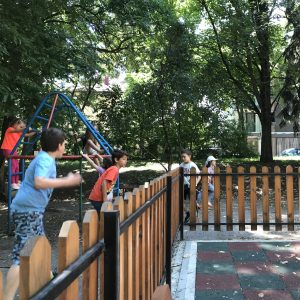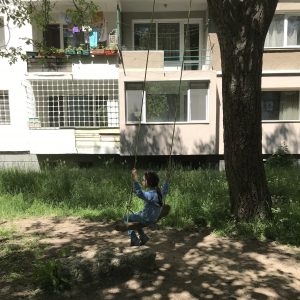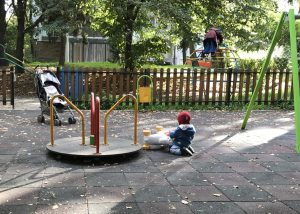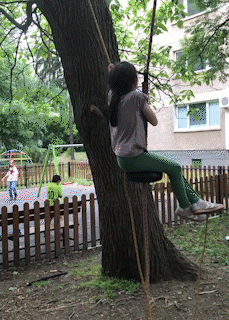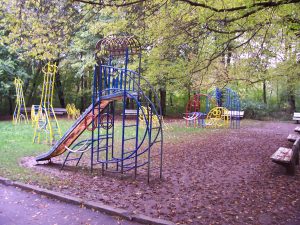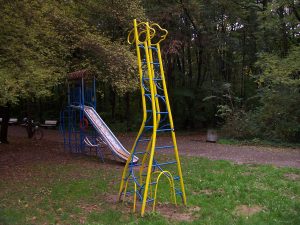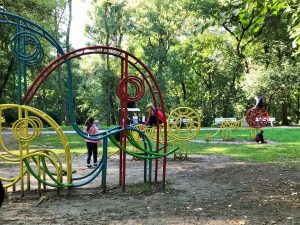
Different scenarios of use – examples from the present
The old metal climbing frames are just part of the variety of equipment and playgrounds that emerged in the world in the 20th century, mainly after WWII. In Bulgaria, namely the metal climbing frames are the play equipment that can still be seen often and are an inseparable part of urban spaces.
Today, decades after they first appeared, climbing frames are in different condition and usage. There are climbing frames that are carefully taken care of or others that have turned into invisible elements of the urban, abandoned and forgotten; climbing frames as contemporary sculptures; climbing frames as a climbing challenge or climbing frames as museum exhibit. Another interesting example is when the old metal climbing frames are adapted in one or another way to comply to contemporary safety requirements.
The photographs that follow will demonstrate the examples just mentioned.
I will start with the South Park in Sofia and two completely different scenarios: on the one hand we have play equipment in the central area of the park that is being repainted and repaired regularly, on the other hand, the forgotten elephant-slide which has been taken over by nearby vegetation.
Like the paths that lead to this slide, the slide itself is abandoned. While the wild raspberry more and more confidently takes over the space.

The boat climbing frame from the TOTALPROEKT exhibition organized by New Architectural Heritage Foundation at the Regional Centre for Contemporary Art Toplocentrala in the summer of 2022 in Sofia is an example of an old climbing frame turned into an exhibit, but at the same time proved its versatility as a play facility within the space of the art center.
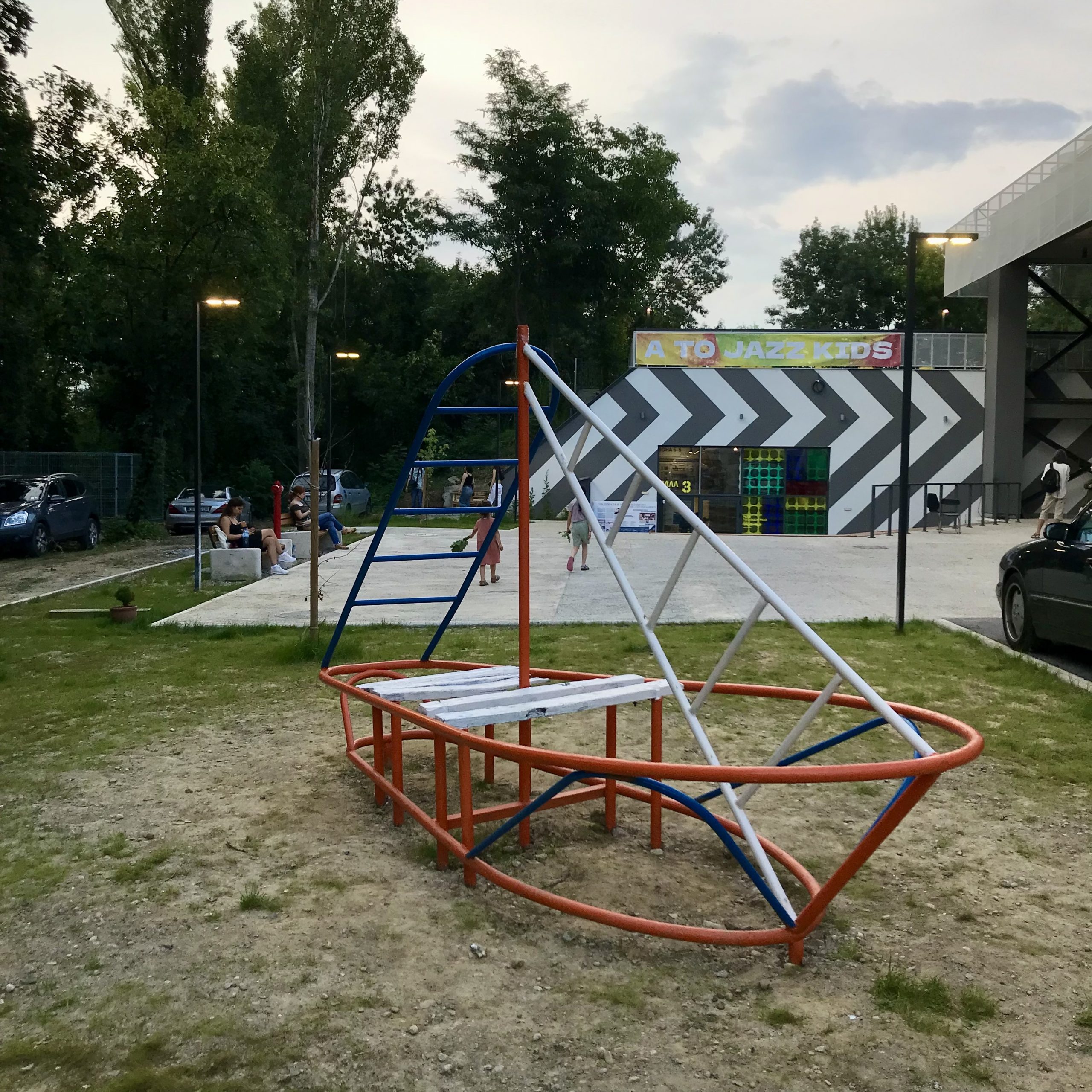
Climbing frames as sculptures – Emilie Pierson, inspired by her own memories, creates the sculptures Катерушка 1 и Катерушка 2, that are part of the artistic residence Bliida in France during the summer of 2022. A detailed set of working drawings are prepared for the sculptures to be manufactured so that they resemble the climbing frames from Emilie’s childhood. The sculptures are then rusted to obtain the desired look.
Climbing frames as a climbing challenge
The passion of René Langner and Stefan König from Germany for rock climbing with professional climbing equipment also brings them to Sofia. In an interview they share: “The design and shape of the nostalgic climbing frames is very exciting and so versatile.” Renee and Stephan create a photo calendar with climbing frames, which leads to people constantly sending them information about different structures around the world.
Thus, their research continues and leads them to new places, including Sofia.
Photos:@gerueste_der_republik
Here for good?
The number of climbing frames in Sofia as in the whole country is enormous. Often imperceptible, they have become an integral part of the urban environment and seem to be here for good, but are they really?
How many are the climbing frames in Sofia?
I will start with this question and some numbers. The amount of old metal climbing frames in Sofia is large. They were an integral part of public spaces (be it internal block courtyards, gardens or parks) created in the 70s and 80s of the 20th century. They were also part of the courtyards of kindergartens created at the same time.
According to the latest data from Sofiaplan (as of June 2021) presented in the map Play spaces in Sofia there are 1779 playgrounds in the city, 926 of which are for repair. Most often, these are playgrounds with old metal climbing frames. They all are supposed to be demolished as for they do not comply with the new safety regulations. New equipment is expected to appear in their place. Indeed this is happening, but relatively slowly.
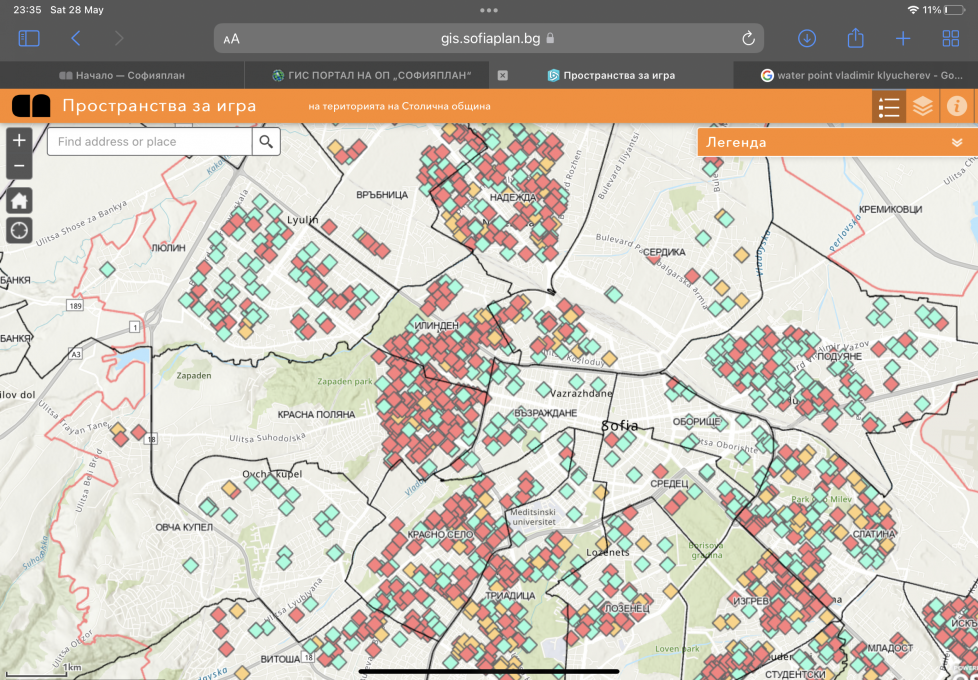

Old climbing frames are disappearing, albeit slowly
The process of replacing old climbing frames can be observed in Sofia for more then a decade now. I will give two examples – the first for the change of internal block courtyard not far from my home; the second – for the changes to a playground in the South Park in Sofia.
A few years ago, two new playgrounds were placed in the internal block courtyard next to Elin Vrah Street. The old equipment was either disassembled or remained outside the fences of the new playgrounds. Some of the disassembled climbing frames remained lying “uprooted” on the grass surface. The rectangular shape of the new playground was in no way compatible with the existing space. Everything outside the fence remained unchanged – old benches, tables and a swing self-made by the people living in the blocks, the old climbing frames and of course, the old carpet-tapping frame. Whereas before the play equipment was part of a common space, now the play space was separated behind a fence. Nevertheless, the old common space remains the children’s play area.
Kids are playing everywhere, older kids do not seem to show much interest in the new play equipment, and some DIY equipment made by their parents is popping up between the big trees. These are a large swing made of a thick branch and a rope trolley between two of the bigger trees.
The second example is a playground with old metal climbing frames again in the South Park in Sofia. It is located among trees near two alleys, and the equipment that currently remains are a family of elephants and three lions. It also previously housed an elephant slide and a giraffe climbing frame, which were dismantled years ago for safety reasons. However, the climbing frames that remain are maintained, as well as some of the other old climbing frames in the park, as already mentioned.
Why does this simple example interest me? It shows us that it is possible to reconsider the risks of old climbing frames – that is, those that really pose a risk due to, for example, their height, can be removed, and other climbing frames can be adapted to modern needs, or contemporary safety rules can be reconsidered.
Can old climbing frames stay for good and is there any benefit to them?
As in Bulgaria so everywhere in the world, playgrounds built after the years of modernism are losing their inventiveness, adventurousness and aesthetic qualities. However, here in Bulgaria besides the new dull plastic playgrounds, we have the old climbing frames and I will repeat – there are many of them and they are still enjoyed by children!
Even if they tire of some and may not be ideal in every aspect, they carry their value.
All these facilities carry our childhood memories, the memories of a childhood in the city. The playgrounds mainly exist in the original conditions in which they were created – that is, they are located in urban space as before, they are not surrounded by fences and separated into an individual play space, but are integrated into the surrounding space, which however is inevitably changing. Sometimes they stay outside the fence of new playgrounds, but are literally centimeters away from it. Are they really that dangerous? Do they pose a risk? Is not the risk created by climbing frames good for children? And are there not other potentially greater risks that the modern city holds?
Metal climbing frames are sustainable, something they have proven over time. Surviving for decades they prove a construction stability surpassing the contemporary out of home public facilities that have to be repaired or even changed rather often. Climbing frames are versatile and provide open-ended play opportunities for different ages, which confirms their high play value. Last but not least, I would point out the flexible integration of climbing frames in the urban environment. Climbing frames have been placed both in groups and individually, thus providing the possibility of space for play to emerge in any location.
There are a few examples around the world of preserving old climbing frames and play sculptures, such as Aldo van Eyck’s playgrounds in Amsterdam; climbing frames in Dresden and play sculptures from East Germany.
Can Sofia reconsider the future of old climbing frames – to be adapted to the new life of the city? Maybe some climbing frames can become art objects in urban space, but also remain places for play and dialogue between grown-up kids and kids now?
Of these over 900 playgrounds that are due for renovation, is it possible that some of them are preserved and maintained? Can we as citizens, parents, city decision makers demand a better environment for our children as well as for us, when the new really represents something of quality and the old is well preserved and adapted to modern life!



